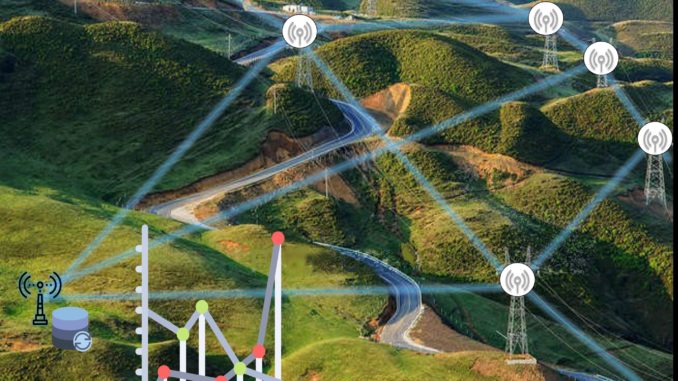
Views: 93
PrognoNetz: Self-learning sensor networks for predicting the load capacity of overhead lines – Adapting the operation to the weather uses the network optimally
Courtesy KIT : In order to integrate the usually volatile renewable sources into the energy supply, higher capacities in the electricity grid are required. However, the need for new-build terraces can be reduced if existing overhead lines can be better utilized depending on the weather conditions. For this purpose, researchers at the Karlsruhe Institute of Technology (KIT) in the “PrognoNetz” joint project are working on self-learning sensors networks that model the cooling effect of weather using real-world data. This allows more power to be sent over the line under favorable conditions.
The rapid expansion of renewable energies – wind energy in the north, photovoltaics in the south – together with the growing international electricity trade place ever higher demands on the electricity transmission grid. In order to transport the electrical energy from the producers to the consumers, to avoid the temporary shutdown of power generation plants from regenerative sources – especially in case of high wind loads – and to ensure overall high security of supply, a considerable expansion of the existing network infrastructure seems necessary. However, this entails lengthy approval procedures and high costs.
However, the need for new-build terraces can be significantly reduced by making better use of existing overhead lines. “It is thus possible to significantly increase the current transport compared to the standard, depending on the weather conditions such as ambient temperature, solar radiation, wind speed and wind direction,” explains Professor Wilhelm Stork, Head of Microsystem Technology at the Institute for Information Technology (ITIV) at KIT. “This increase can be achieved without exceeding the maximum permissible conductor temperature and without falling below the minimum distances between the conductor and the ground or objects.” The cooling effect of the local topography and vegetation is of particular importance here.
The ITIV-led project “PrognoNetz – self-learning sensor networks for weather-dependent overhead line operation” aims at high-resolution overhead line monitoring in real time. Also involved in the joint project are the weather service UBIMET GmbH Karlsruhe, the transmission system operator TransnetBW GmbH based in Stuttgart, the IT company unilab AG Paderborn, GWU-Umwelttechnik GmbH Erftstadt and Wilmers Messtechnik GmbH Hamburg. The project, funded by the Federal Ministry for Economic Affairs and Energy (BMWi), started in early 2019 and runs for three years.
In PrognoNetz, the research and industry partners are developing nationwide sensor networks with intelligent sensors, which – unlike conventional weather stations – are located at close distances to each other and in close proximity to overhead lines in order to precisely capture the weather conditions. The sensor networks are also designed to withstand harsh environmental conditions and deliver critical data wirelessly and reliably to the control center. New algorithms are designed to give the sensors a self-learning function so that they can automatically generate more accurate current load forecasts for hours or even days, based on the weather data being distributed. Based on historical weather data and topographical features, intelligent models are formed for each line of the power grid. The scientists of the ITIV work in PrognoNetz, among others, on the model models based on artificial intelligence as well as on a laser-based wind sensor, which measures more accurately than rigid mounted conventional sensors, and on unmanned drones for the installation and maintenance of the weather sensors on the power pylons.
The self-learning meteorological network developed in PrognoNetz will initially be used on existing high-voltage power lines and equipment of the partner TransnetBW. “With this network based on artificial intelligence, existing power grids can be optimally utilized at any time by adapting the operation to the weather conditions and bridging bottlenecks,” says Wilhelm Stork. “This allows electricity to be increased by 15 to 30 percent under favorable conditions, ie low outside temperatures or strong winds.”
Details about the KIT Energy Center: www.energie.kit.edu External
As “The Research University in the Helmholtz Association”, KIT creates and communicates knowledge for society and the environment. The goal is to become global challengers to make significant contributions in the fields of energy, mobility and information. Around 9,300 employees work together on a broad, disciplinary basis in natural sciences, engineering, business, humanities and social sciences. Its 25,100 students prepare the KIT for responsible tasks in society, economy and science through a research-oriented university degree program. The innovation activity at KIT bridges the gap between knowledge and application for social benefit, economic prosperity and preservation of our natural livelihoods.
Leave a Reply